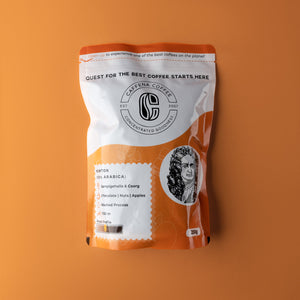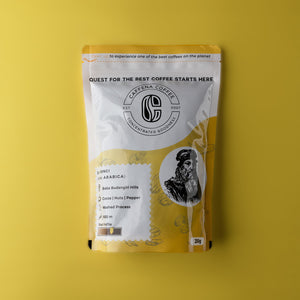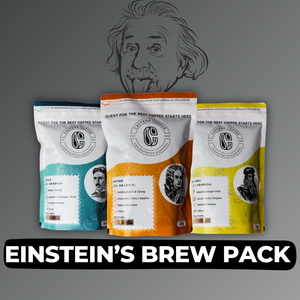Hi there!
We're back at it, although after a pretty long hiatus, at what we do best;
Serve great coffee - educating & empowering you guys - kick ass (in that respective order).
The following is a quick guide for you to refer to, whenever you think of Coffee cupping & what it exactly stands for.
We will obviously put down an in-depth article about the same followed by a video on IG/Youtube, but for the uninitiated, here is the place to get started!
Before explaining the principles of the examination in detail, it is necessary to provide you with a glimpse of how it works, and so, we continue the practical lesson. First we will set our cups in order and build environment that we can sense.
1. Choose your space: A room which is removed from other working areas & great enough to accommodate people & there belongings during the activity. Its for this reason that we also wish to find an area in which we can engage in the task without being interrupted.
Also, make sure that the place is not filled with any other aromas (read no Dior Sauvage or Chanel No.5) and is quiet for working.

2. Heat the water: The water should be hot, but not boiling, to activate the freshly roasted coffee which will then by ground coffee. Perfect temperature is around 200-203°F (93-96°C). If a thermometer cannot be used, the water be allowed to rest for thirty seconds after taking it from the boil.
3. Set up your samples: Ideally, one should analyse several samples at once to ensure variety & have a basis for comparison between what different coffees are & how do they differ. We normally have about 5–7 types of coffees that we have sourced & roasted to check if they fit well with what we aim to deliver next at Caffena & to also ensure that the results can be replicated with the same consistency, year-around for the coffees that we want to stick around for the entire year.
Also, do place some labels on the cups so you know what coffee is being sampled & to ensure peace and harmony among your fellow tasters as well. (The last part is strongly advised as the absence of it had resulted in a fist fight the first time we tried cupping :')

4. Grind the coffee: You want the beans ground at the time when you are going to initiate the cupping session ideally. This grind size should be coarse like coarse sea salt grind size. The coffee will steep evenly in this size, but still not be too muddy in consistency.

5. Add the coffee: The general rule on cupping ratios is 8.5 grams of coffee per 150ml of water (which is roughly one tablespoon). You can also use a very useful method of using an adjustable weighing scale to measure out a more accurate amount. Tap a cup after serving it lightly on the counter to settle the grounds into the bottom.
6. Pour the hot water: Fill up from the center of each cup starting from the rim up to one millimeter above it, doing each slowly at a time with hot water. That is about 150ml or 1 cup of water per 8.5gm of coffee. The coffee does seem to take some time to bloom after it has been infused with water so some patience would be necessary.
7. Let the coffee bloom: After the aroma of which begins to appear, observe the process of “blossoming” of coffee grounds. The actual time it takes will vary, depending on how many questions the audience asks — it will probably be between 30 and 45 seconds.

8. Steep and cool: Coffee should brew for about 3-4 minutes. Allow cups to sit undisturbed for a 3-4 minutes, then let them cool for a couple minutes. Also, it’s important to remember that flavors in the coffee can change as the coffee cools as the cupper cups it.
9. Evaluate the aroma, taste, and aftertaste: Analyzing the coffees, smelling each coffee in turn, comparing aromas, predicting defects and then scoring and analyzing the coffees. Slurp the coffee slowly and taste how the coffee will swirl around your mouth.

10. Record your notes: On your first sip focus on the Aroma of the coffee, then your second focus on slurping techinique making sure that the coffee is evenly spread on your pallet, and on the third focus on the after taste of the coffee.The purpose is to achieve several or even multiple evaluations of the presented product in order to give you a certain experience and to let your palate evolve.

11. Score the coffee on the SCA Quality Scale
After evaluating the coffee's aroma, taste, body, acidity, balance, and aftertaste, score it using the Specialty Coffee Association (SCA) Quality Scale, which ranges from 60 to 100. Coffees scoring 80 or above are classified as specialty coffee, reflecting high quality, while those scoring below 80 are considered commercial grade coffee. Take into account the clarity of flavor, uniformity, sweetness, and overall harmony of the cup during your evaluation. To aid in this process, we’ve attached the SCA Scoring Paper for detailed documentation and the Coffee Taster’s Flavor Wheel to guide your sensory analysis. These tools will help you ensure a thorough and consistent assessment of each coffee sample.


Of course, practice make perfect when it comes to cupping. Then, have fun in the process of learning to like and comprehend other types of coffee beans and roast. Happy cupping!





